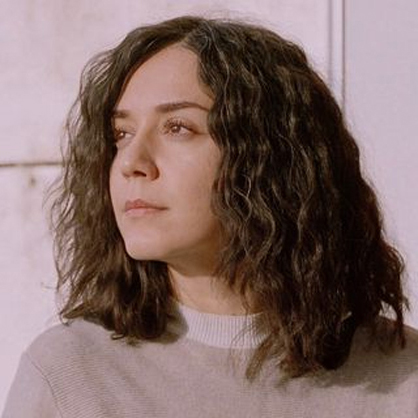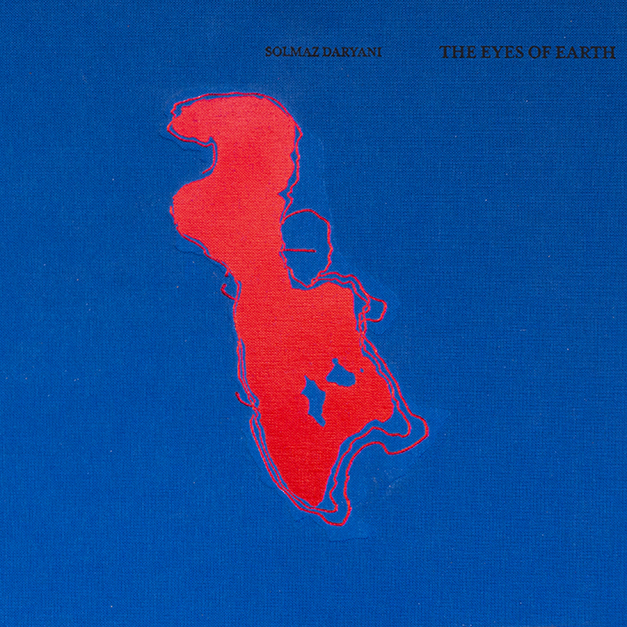The Eyes of Earth tells a deeply personal story about the environmental disaster at Lake Urmia as seen through the eyes of Solmaz Daryani, a self-taught photographer, who grew up on the lake. Her grandfather ran a lakefront hotel in the tourist port of Sharafkhaneh and her uncles were sailors. She spent her childhood summers with her grandparents on the lake and, less than a decade ago, her grandfather hosted dozens of people every day. It was the disappearing lake and faded childhood memories that induce her to take the camera and start documenting what was left of the largest lake in the Middle East and the second largest salt lake on the planet.
Congratulations on winning the 2020 FotoEvidence W Award for your personal work “Eyes of the Earth” about the drying of Lake Urmia. Tell us about yourself, your family and your childhood in Sharafkhaneh Port, on Lake Urmia, in Iran
I was born and raised in Tabriz city, 50 km from Lake Urmia, which is the city with the largest Azerbaijani population in Iran. My extended family on my mother's side, my grandparents, mother, and uncles were born and lived in Sharafkhaneh Port, a tourist town on the north coast of Urmia Lake.
Lake Urmia is shared between the Iranian provinces of West Azerbaijan and East Azerbaijan and is surrounded by rugged red mountains. The people who live around the lake treasure it as a symbol of their identity, calling it "the turquoise solitaire of Azerbaijani Iran."
Once a thriving tourist destination, Lake Urmia provided a livelihood to countless people, including my mother's family. Around 15 years ago, my grandparents ran a lakefront motel in the touristy port city of Sharafkhaneh. They hosted dozens of tourists a day in the summers. They also owned several grape and almond gardens which were mostly planted and managed by my grandmother.
I spent all my childhood summers and weekends at my grandparents’ house on the shore of this great salt lake. When I think back to the days when I was a child, I think of my enjoyable childhood and the freedom I felt while spending time at the port town. Space and freedom that rarely could be experienced by girls or friends my age in Iran. I cherish those memories and still remember the sound of the wave, the chatter of beachside vacationers, the sulphur smell of the dark mud, and the salty breeze in the mid-afternoon heat.
One of the most vivid memories of my childhood is of the bird migration season. Once a big white bird, that my uncle told me was a pelican, dropped into my grandmother's yard. The bird's wings were wounded. It was a fascinating and unique moment to see the big bird up so close, but I remember feeling so sad because it was injured. My grandmother bandaged its wings and took care of it for about one week and, once it was healed, she gave the bird to my uncles to release on the lake with their boats.
People who live in the Urmia basin have deep social and economic ties with this shrinking body of water. I am sure that many other people living around the lake had the same experiences I had. When I talk about the lake, I am not addressing only the environment, but also the identity that people and places give each other and their memories. The heritage of the past connects the chain of time to the present.
“A lake is earth’s eye; looking into which the beholder measures the depth of his own nature.”
Henry David Thoreau
Photo: Solmaz Daryani
2018-03-10
East Azerbaijan Province
Iran
In the distance, the imposing structure, which bears the name “Tal”, was used to repair ships in the water.now anyone can walk to the structure.
Photo: Solmaz Daryani
2015-05-26
East Azerbaijan Province
Iran
Shepherd returning to his home after spending the morning grazing his sheep.Agriculture and ranch are in danger in the shore of the lake.
Photo: Solmaz Daryani
2012-04-25
East Azerbaijan Province
Iran
A girl is Swimming in shallow water in coast of Urmia salt lake.
You started as a self-taught photographer, how did photography come to be important in your life?
My first experience in photography came pretty late. At 24, I graduated from University with a computer science degree. My initial goal was to study computer science because my parents wanted me to be a doctor or engineer so I could find a job after graduation in Iran's competitive job market. I started working in a telecommunication company after graduation. Still, I always knew this wasn't what I wanted to do for the rest of my life. My father persued photography as a hobby since a young age. As a child, I always remember him carrying an old Zenith film camera with him on every trip and taking pictures of me and my brother and landscapes, or anything interesting around him.
In 2013, my father gave me a small digital camera for my birthday. I wasn't photographing with an idea of becoming a professional photographer at first. Photography was an excuse for me to get away from my city and workplace and travel. My first photos are from Lake Urmia and my grandparents’ house and their ruined motel. Every time I was going through the motels' ruins and walking alone on the lake's salt-crusted shore, which once was water, a strong mixed feeling of nostalgia and grief rose in me. I knew that there was a story to tell about this. Still, I didn't know how to tell a story through pictures, so I took photos based on my instincts without even having enough technical knowledge.
I didn't have the chance to take photography courses. Instead, I read books, websites and articles and used other great photographer's work as inspiration to learn photography. I assume that makes me a self-taught photographer, which I believe is much harder than attending University, where all the learning packages are ready. On the other hand, you are free of constraints to develop your own style.
The W Award Is granted specifically to a female photographer and many new programs are developing to support women in photojournalism, to compensate for years of gender discrimination. Do you find it challenging working as a female photographer in Iran?
A woman photographer here is not without various difficulties and challenges. Nowadays, many women photographers in Iran are joining this profession and working in different photography fields. However, there are still very few women photojournalists, or photographers who work professionally in Iran and women are thoroughly underrepresented.
As a female Iranian photographer, I have been facing many obstacles and difficulties to carry on my work with restriction from my family or society. It was not easy to take pictures in small villages with Iranian society's restrictions. I was continuously questioned by almost everyone, and It was challenging to travel alone when I first started photography.
Being a female photographer undoubtedly has its advantages, particularly in a religious country. It helps when photographing families, women, girls, and weddings. It allows you to enter people's homes and personal spaces.
Photo: Solmaz Daryani
2012-01-07
East Azerbaijan
Iran
A dilapidated ship located at the northeast of Lake Urmia. Sharafkhaneh Port used to be one of the heavily travelled touristic villages.
Since 2014, you have been working on a personal story about how the death and revival of Lake Urmia has had consequences on the area and on your family, whose livelihood depended on to the lake. What have you documented?
Lake Urmia was once a thriving tourist destination, providing a livelihood to countless people. Agriculture, tourism and livestock are the primary sources of income for people in the region.
Households that relied on tourism were among the first to be affected by the disaster. As the lake began to shrink, people lost their jobs. The property values of the surrounding lands decreased, thereby creating additional financial problems for many families. Many people moved away or shifted to farming, looking for another income opportunity, increasing the already high demand on limited water resources.
Most of the agricultural plots were situated on Lake Urmia's margins and have been adversely affected by the lake's reduced water levels and the growing salinity of the groundwater.
I documented the impact of the shrinking lake on the people, their livelihoods and the environment around the lake. I photographed migration, loss of jobs, desiccation and damages to agriculture around the lake. I also tried to show how people damaged their environment with excessive use of limited resources and how this mismanagement later impacted their lives.
I hope the possible distribution of the book by Urmia Lake Restoration Program will help educate and inform about the severity of the lake's condition and the importance of its preservation for wildlife, local inhabitants, their livelihoods and all of us. All of us are interconnected with critical environmental issues. I hope the story of Lake Urmia brings more visibility to ecological problems in my country.
I especially hope that it will encourage Iranians to think about the importance of preserving our national assets as a nation together. Not just from the top to down but also from the bottom up, as individuals.



